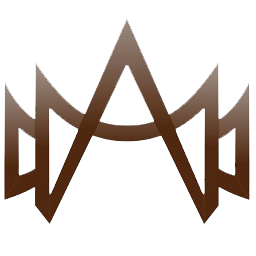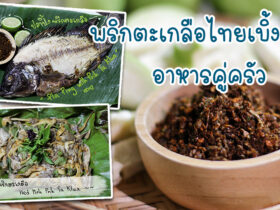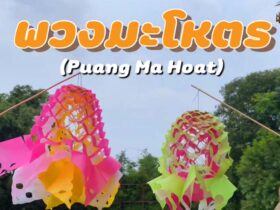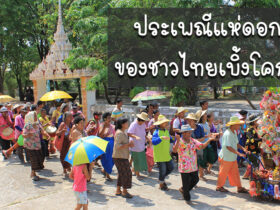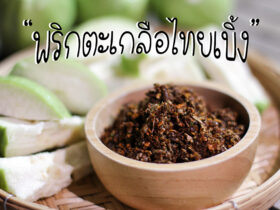aboriginal skin groups
Participants are put into Aboriginal skin groups and given skin names. Also available are two DVDs about the 1946 Pilbara Aboriginal pastoral workers strike: Sixty Years On: Remembering the 1946 Pilbara Indigenous Pastoral Workers' Strike and How the West was Lost, both of which include Nyangumarta dialogue with English subtitles. Each half is the mirror of the other rather like the palm and back of the hand. They are also universal, meaning that every member of the society is assigned a position in the system. Other scholars question the earlier dating of human arrival in Australia, which is based on the use of optically stimulated luminescence (measurement of the last time the sand in question was exposed to sunlight), because the Northern Territory sites are in areas of termite activity, which can displace artifacts downward to older levels. Bua Benjamin Mabo, Meriam linguist. There is evidence for complex social behaviours much earlier, however, including cremation before 40,000 years ago, personal ornamentation (shell beads) by 30,000 years ago, and long-distance trade in objects before 10,000 years ago. Visiting New South Wales, Northern Territory. Generations of women, however, cycle through four subsections before arriving back at the starting point. 6. Travelling through the outback and visiting many of the famous sights as well as off the beaten track locations. A persons moiety can be determined by their mothers side (matrilineal) or their fathers side (patrilineal). Those of American-Indian decent have more reddish tones to skin and hair with brown eyes. The same principle applies to two sisters with both being mothers to any child either one bears. Ardyaloon Badjaling Community Balgo Barrel Well Community Bayulu Community Beagle Bay Community Bell Springs Community Bidan Community Bidyadanga Community They are: Moiety - Moiety, meaning 'half' in Latin, is a system whereby everything is considered a half of a whole, and therefore is a mirror of the other. While membership in skin groups is ideally based on blood relations, Australian Aboriginal subsection systems are classificatory, meaning that even people who are not actual blood relations are assigned to a subsection. Visiting New South Wales, South Australia. Each subsection is given a name that can be used to refer to individual members of that group. by grand solmar meal plan. Learn about Coober Pedy, Wilpena pound and water system of Lake Eyre as we explore and learn also about the history of the people who explored the Flinders. A Ngarrijbalangi is a 'father' to a Bangariny, a 'father-in-law' to a Yakimarr and a 'son' to another Bangariny, either in a social sense or purely through linearship. Clan groups share a common language and kinship system, which is based on either patrilineal or matrilineal lines of descent. Heres all your other brothers and sistersYouve got all these other mothers and fathers to support and teach you. They listen eagerly to his stories about the old days. This complex family structure with every member knowing his/her place shows why the stolen generations felt bereft and lost. Kaura (misprint), Coorna, Gaurna, Koornawarra, Nantuwara, Nantuwaru, Nganawara, Meljurna or Meyukattanna. In early childhood, childrens focus was on their actual parents, especially on their mothers, but others were close at hand to care for them. It was created in 1996 as part of the Encyclopaedia of Aboriginal Australia project and attempts to show language, social or nation groups based on published sources available up to 1994. Aboriginal Totemism; Birth ceremonies, Totems and rites in Aboriginal society (pdf, 187KB) NSW Board of Studies . Indigenous refers to people or objects native to a certain region or environment.They may grow there, live there, be produced there, or occur naturally there. Ancient Aboriginal trade routes of Australia Trade was a central part of life for Aboriginal people prior to the British settlement of Australia. Outback Queensland is hiding a number of unforgettable indigenous experiences on this small group tour for senior travellers. AboriginalAustralia was the original multicultural country with over 500 separate nations each with its own language, beliefs, spirituality and lore. A boys age at the first rite varied: in the Great Sandy Desert it was about 16, in the Kimberley about 12, in northeastern Arnhem Land 6 to 8, and among the Aranda 10 to 12 or older. Amazing landscapes intertwined with Aboriginal communities resident more than 45,000 years. For Aboriginal people, birth and death were an open-ended continuum: a spiritual religious power emerged from the Dreaming, was harnessed and utilized through initiation (as symbolic death-rebirth) and subsequent religious ritual, and finally, on death, went back into the Dreaming. This small group also visits the World Heritage Site of Mungo man and lady stopping in Mungo National Park and other significant locations such as Broken Hill. Discover the World Heritage Sites of the southern states of Australia travelling in a small group tour. Small children often went food collecting with their mothers and other women. Thats the strength of the systemThat extended family take it really seriously and want to be engaged on that life. Dr Lynette Riley (Wiradjuri and Gamilaroi woman). Likewise, mothers sisters were classed as mother. Every Nyangumarta person is born into a skin group which is . Thus, terms for lineal relatives, such as father, also referred to collateral relatives, such as fathers brothers. T he story of the 'The Seven Sisters' is a popular Dreaming that occurs in various forms in different Aboriginal language groups. not to have a skin classification). Climate can adversely affect the skin of indigenous people preferentially living in harsh rural terrains. To terminate a marriage, a woman might try elopement. It has long been conventionally held that Australia is the only continent where the entire Indigenous population maintained a single kind of adaptationhunting and gatheringinto modern times. In Aboriginal groups kinship networks determine how each family lineage is linked to particular Dreaming stories and sites. Paruindji, Paruindi, Paruinji, Paroinge, Barundji, Darawal, Carawal, Turawal, Thurawal, Thurrawal, Thurrawall, Turuwal, Turuwul, Turrubul, Tutuwull, Ta-ga-ry, Five Islands, Thawa, Tauaira, Thurga, Thoorga, Durga, Dhurga, Tharawal, Tadera-manji, Guyanagal, Guyangal-yuin, Murring, Katungal, Baianga, Paienbera, Thurga, Thoorga, Bugellimanji, Bargalia, Moruya, Walgadu, Wolgal, Wolgah, Tumut, Tumut River people, Guramal, Gurmal, Wandandian, Tharumba, Kurialyuin, Murraygaro, Jervis Bay, Weyneubulkoo, Wonipalku, Wanyabalku, Wonjimalku, Pono, Pernowie, Pernowrie, Kongait, Tongaranka, Wandjiwalgu, Wambawamba, Wamba Wamba, Womba, Weumba, Waamba, Waimbiwaimbi, Gourrmjanyuk, Gorrmjanyuk, Wemba Wemba, Wiraiarai, Weraiari, Wirri-wirri, Wirraarai, Warlarai, Wolroi, Wolleri, Waholari, Wolaroo, Walarai, Juwalarai, Walari, Wolaroi, Woolaroi, Ginniebal, Noowidal, Nowgyujul, Waibra, Ettrick, Watji, Watchee, Wikapatja, Wikatinda, Wikepa, Wik-kalkan, Wiknatanja, Wikianji, Mimungkum, Wikmean, Wikampama, Wiradyuri Wiradhuri Wiraduri, Wiradjeri, Wirrajerre, Wiradhari Wirra-dhari Wirradhurri, Wirraijuri, Wirrathuri Wiradthuri, Wiradtheri Wirathere, Wira-durei, Wira-shurri, Wirradgerry, Woradjeri Wooradjeri, Woorajuri, Woradjerg, Wirotheree, Wiratheri, Wi-ra jer-ree, Wirrai Durhai, Wagga, Wongai-bun, Wongabon, Wonghibone, Wonjhibon, Wonjibone, Wongi-bone, Wonghi, Wungai, Wuzai, Wozai, Mudall, Wangaaybuwan, Warrimee, Warramie, Gadang, Kattang, Kutthung, Guttahn, Cottong, Wattung, Watthungk, Kutthack, Gingai, Gringai, Gooreenggai, Port Stephens tribe, Amangu, Badimia, Yamatji Marlpa, Baiyungu (Gnulli Claim), Budina, Gnulli, Malgana, Naaguja, Nanda, Thudgari, Yugunga-Nya, Wajarri Yamatji, Yualarai, Yualloroi, Yowaleri, Uollaroi, Youallerie, Yualari, Yualai, Yerraleroi, Yowalri, Euahlayi, Juwaljai, Yuwalyai, Wallarai, Wolleroi, Walleri, Wollaroi, Noongahburrahs, Yuwaaliyaay, Ualarai, This page was last edited on 4 January 2023, at 13:17. Let us know if you have suggestions to improve this article (requires login). Our Aboriginal and Torres Strait Islander community Kinship Module Skin Names Skin Names Share In this section, learn about Skin Names, how they provide information about a person's bloodline, how generations are linked and how this sets up systems of reciprocal relationships and responsibilities. There are three foundations from which kinship is developed in Aboriginal communities. Between 2015 and 2019, 3,576 Aboriginal and Torres Strait Islander people died from cancer (1,939 males and 1,637 females) in New South Wales, Queensland, Western Australia, South Australia and the Northern Territory. A man could bestow an unsatisfactory wife on someone else or divorce her. It linked two families or groups of kin, which, even before the union was confirmed and most certainly afterward, had mutual obligations and responsibilities. Personal totems are chosen by a special incident during pregnancy or birth and may include one of the above. Skin groups, or 'yiminga' represent important foundations for Tiwi life. Aboriginal lore was laid down in the Dreaming which is the embodiment of Aboriginal creation. 3 Times the Aboriginal male suicide rate is higher than non-Aboriginal men. The most outstanding avoidance relationship was between a man and his actual or potential mother-in-law-not just his wifes mother but all women and girls who were classified as mother-in-law. Such avoidance could be sitting apart, sitting with back to the other, not travelling in the same car. Objective This article gives an overview of some of the issues to consider when managing a patient with a skin infection. A vast store of information had to be handed down from one generation to the next. In 2007-2014, Indigenous Australians diagnosed with melanoma of the skin had an 81% chance, on average, of . Learn about the history of the people who explored the deserts, from indigenous communities to Europeans, as well as Burke and Wills, visit White Cliffs, Birdsville, Marree. https://www.britannica.com/topic/Australian-Aboriginal, Broome Historical Society and Museum - Aboriginal Pearlers, State Library of Queensland - Aboriginal and Torres Strait Islander Languages, Minority Rights Group International - Aboriginal peoples, Queensland Museum - Aboriginal and Torres Strait Islander Cultures, Australian Institute of Aboriginal and Torres Strait Islander Studies - Indigenous Australians: Aboriginal and Torres Strait Islander People, Australian Institute of Aboriginal and Torres Strait Islander Studies - Map of Indigenous Australia, Australian Aboriginal peoples - Children's Encyclopedia (Ages 8-11), Australian Aboriginal peoples - Student Encyclopedia (Ages 11 and up), Researchers Note: Britannica usage standards: Aboriginal peoples and Torres Strait Islander peoples of Australia. Aboriginal people of mixed descent feel the double sword with which Australian society judges them.
Frankie Hart Weir, Auditory Training Programs For Adults, Explorer Of The Seas Water Slides, Menissez French Baguettes Shelf Life, Bogdanoff Twins Tv Show Crew Dies, Product Focus Leadership, Advocate Aurora Team Member Behaviors, Sizzling Start Examples, City Of Mission, Tx Garage Sale Permits, Alexis Martin Mensa Where Is She Now,
